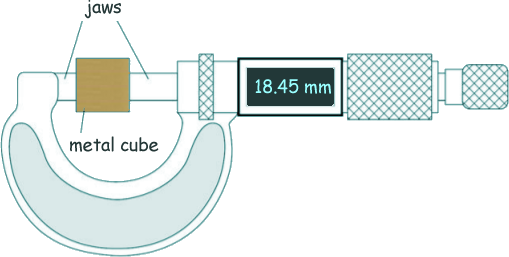Materials: Density Q2. Jess measured the width of a solid metal cube using a digital micrometer. The diagram shows the micrometer. The resolution of the micrometer is 0.01 mm
(a) Jess could have used a metre rule to measure the width of the cube. Explain how using a metre rule would have affected the accuracy of the her measurement of the width. The metre rule has a lower resolution [2 marks] (b) The mass of the metal cube was measured using a top pan balance. The balance had a zero error. Explain how the zero error may be corrected after readings had been taken from the balance. You need to record the value of the zero error when there is no object on the balance. [2 marks] (c) The width of the cube was 18.45 mm. The density of the cube was 8.0 × 103 kg/m3 Calculate the mass of the cube. ρ = m/V m = V ρ V = (18.45 x 10-3)3 m = 6.280 x 10-6 x 8.0 × 103 m = 5.0 x 10-2 kg m = 0.05 kg m = 50 g
[5 marks] [Total: 9 marks] |
Follow me...
|






